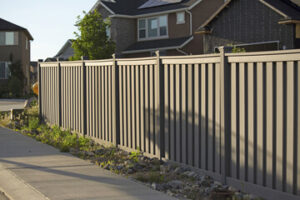Plumbing connects people with clean, safe water. It also removes waste and protects buildings from structural damage and health hazards.
Plumbing regulations vary by region and are set by government agencies. These guidelines ensure that plumbers follow best practices and protect public health and safety. Visit https://www.castlerockplumbingllc.com/ to learn more.

The main components of a residential plumbing system include water supply lines, drain pipes, and venting systems. Fixtures and appliances like sinks, toilets, showers, and dishwashers are connected to these lines.
The water supply is the water that runs through your home plumbing system. This water comes from a municipal or private water supplier and is treated and distributed for domestic, commercial, and industrial purposes. It may also be used for public services such as firefighting, sewage disposal, and street maintenance. Water supply systems must meet water-use demands and maintain adequate pressure. The design of these facilities depends on climate and environmental conditions.
The journey of your water starts at the city main, which is usually 1 inch in diameter or larger. This pipe connects to your house and usually houses a main shut off valve, known as a “Buffalo box.” In newer homes, there are separate lines from the water heater to each room, which allow the individual use of toilets, showers, and sinks to not affect one another. Older homes often have a single line running from the water heater to all rooms, and this can be an issue if someone flushes a toilet downstairs while somebody is taking a shower upstairs.
Depending on the plumbing layout of your house, a water line might serve both cold or hot water. Choosing the right water line size is important to prevent excessive wear, which will lead to shortened life and costly repairs. The piping system should be designed with a maximum velocity of 8 feet per second (fps) or less. The sizing of each water supply pipe is determined by the amount of water it is required to carry at peak demand. This is calculated using a value called water supply fixture units, or WSFU, which is defined by the governing plumbing code.
WSFU values are assigned to each fixture type according to the number and frequency of its use. For example, a water closet has a WSFU value of 2.5 while a sink has a WSFU value of 1.0. The sizing of each pipe is then based on this calculation, with consideration of the piping’s material and size. A plumbing design consultant can help you choose the best piping for your needs.
Waste Disposal
Waste disposal is a complex process that involves the removal or destruction of waste materials. Depending on the type of waste material and its handling, improper disposal can lead to water pollution, soil contamination, or air pollution. However, proper waste disposal methods can reduce these effects and protect the environment.
Non-biodegradable and toxic types of waste are a major cause of environmental harm. Globalisation and industrialisation have led to the increase in production of these substances. Some of these include cigarette butts, batteries, sanitary products and oil products. These substances if not disposed of properly can cause harm to human beings and other animals. Open burning of these substances can also release harmful gases and smoke into the air. Similarly, dumping of these wastes into rivers and canals or using them to fill land depressions can also pose problems.
Other man-made wastes like cell phones, computers, and batteries are also very hazardous to the environment. These devices contain lead, mercury, and plastic that can cause environmental harm. This is why it is very important to recycle these products rather than throwing them in the garbage. Recycling these products transforms them into a new product and saves the environment from useless waste materials.
Some common methods of waste disposal include storing, collecting, and transporting. Each of these steps requires specific procedures and safeguards to ensure proper management. Some of these include chemical, thermal, and biological treatment. Some of these processes change the molecular structure of the waste material and others reduce its volume, infectious potential, or toxicity. Finally, waste can be encapsulated in concrete or asphalt to prevent leaching.
Another method of waste disposal is a sanitary landfill, which is a pit with an impermeable synthetic liner that prevents toxic chemicals from leaking into the groundwater. Sanitary landfills are used for solid and liquid wastes, including hazardous chemicals. Other methods of disposal include material recycling and incineration. Some of these techniques require special equipment and may be more expensive than traditional waste disposal methods. However, the long-term benefits of these systems can far outweigh the initial investment.
Ventilation
Venting is a vital part of a plumbing system that ensures proper airflow to prevent blockages and other drainage issues. It also helps keep dangerous sewer gases from entering a plumbed structure. The ventilation system is composed of a main vent stack and individual vent pipes that connect each fixture to the stack. The main vent stack is typically located inside the roof of a home or building, while individual vents can be found on each drainpipe under a sink or toilet.
Each drainpipe contains a water-filled P- or S-shaped trap that helps to prevent foul smells and sewage gasses from migrating into living spaces. The trap seals shut when water is released, but the system requires fresh air to balance the pressure and prevent a vacuum from forming. A properly functioning plumbing vent allows air to enter the drainage system as wastewater leaves, keeping the pressure constant and preventing a vacuum from developing.
Without a properly functioning venting system, waste matter decomposes inside the pipes, creating foul-smelling and toxic sewer gasses that can seep into living areas. These gases can cause a variety of problems, including sluggish drains and gurgling noises. Plumbing vents allow air to escape the pipes as the waste matter decomposes, preventing these harmful gasses from entering the living space.
One of the primary roles of plumbing vents is to maintain the water-based trap seals under sinks and toilets. Vents are designed to be in direct contact with the trap water, which keeps these gases from escaping into the living area. Vents also provide a pathway for air to enter the trap when the drain is opened, preventing these gases from forming.
A blocked vent can lead to a number of issues, including sluggish drains, flooding, and even sewer backups. It can also create a vacuum effect, causing water and waste to back up into sinks or bathtubs. Symptoms of a blocked vent include a musty odor, standing water in the drain, and a gurgling sound as wastewater is trying to exit the pipe.
Plumbing vents are usually made from corrugated plastic or metal, which provides strength and flexibility for the pipe. These vents can be easily installed, and they require little maintenance to function correctly. However, since they are exposed to the elements, they can become clogged with debris, rodent nests, or leaves.
Installation
A plumbing system brings fresh water into buildings and removes wastewater while ensuring a safe and hygienic environment for building occupants. It includes pipes, fixtures, and appliances such as toilets, showers, sinks, dishwashers, and water heaters. The installation of these systems requires a high level of skill and knowledge to prevent leaks, water damage, and health hazards. Plumbers must also adhere to local and state regulations regarding the materials they use, the methods they employ, and the safety precautions they take.
A home’s plumbing system begins with a water supply line connecting to a water meter and water main. Then, the water flows through pipes made of copper, PVC, or PEX to supply faucets, appliances, and other fixtures in your house. Valves control the flow and pressure of water in these pipes. The piping system also contains backflow prevention devices to keep contaminated water out of the drinking supply.
As the waste from these fixtures is produced, it is carried away through drain lines connected to each fixture and appliance. The piping system then connects to a wastewater treatment or septic system. The treatment process eliminates contaminants and bacteria, while the septic tank takes care of the rest.
Even with regular maintenance, plumbing issues can arise. For example, dripping faucets can result from worn-out washers or O-rings. Leaky pipes are commonly caused by corrosion, loose connections, and extreme temperature fluctuations. Drains that slow or clog frequently can be caused by hair, soap scum, and food particles.
Plumbing problems can impact the health and safety of your family or employees, so it is important to seek professional help as soon as you notice them. A licensed plumber can inspect your plumbing system and recommend the best course of action for repairs or replacements. They can also advise you on how to improve your plumbing to reduce energy and water usage, which will contribute to a more sustainable lifestyle. Upgrading your current plumbing fixtures to more efficient options can significantly lower your carbon footprint and save you money on your energy bills. These changes will not only reduce your water and energy consumption, but they will also help preserve our planet’s natural resources for future generations.

